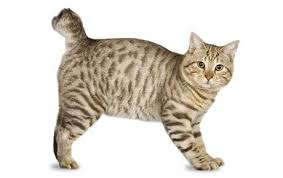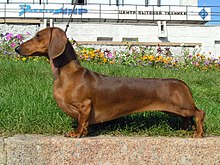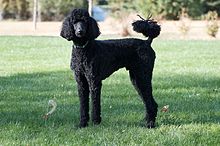Breed-related disease: The Rottweiler

John K. Rosembert The Rottweiler is a breed of domestic dog regarded as medium-to-large, or large. The dogs were known in German as Rottweiler Metzgerhund, meaning Rottweil butchers’ dogs, because they are descends from dogs used by the Romans to drive the herds that fed the army as it marched through Europe. Along the way, […]
Breed-related disease: American Bobtail

John K. Rosembert The American Bobtail is an uncommon breed of domestic cat which was developed in the late 1960s, which descends from a short-tailed kitten acquired by a couple John and Brenda Sanders during a vacation to Arizona. It is a medium to large, semi-cobby cat. Their sturdy bone structure and well-developed musculature, along […]
Breed-related disease: Dachshund

The dachshund originated in Germany as a hunting dog. Though its origins can be traced as far back as the 15th century, the breed’s development really began in 17th century Germany. Called dachshunds, which translates as “badger dogs,” these short hounds did just that—they hunted badgers. Their short legs, loose skin, big chests, determination, and […]
Breed-related disease: Ragdolls

In the family of cat breeds, Ragdolls are among the younger siblings. The cats were first developed by breeder Ann Baker who wanted to develop a beautiful cat with a loving, gentle personality, and she started with domestic longhairs of unknown ancestry. Josephine, the foundation cat, was white with Siamese-type markings, and in her genes […]
Breed-related disease: Poodle

Poodles are believed to have originated in Germany, though they have been known as French dogs for many years. Their name is derived from the German word pudel, meaning “to splash in water.” Standard poodles are considered the oldest form of this breed. Their history of use as retrievers and water dogs led to the […]
A Review on Feline Calicivirus

Maigan Espinili Maruquin Structure and Replication The Caliciviruses are small, non-enveloped, positive strand RNA viruses which infects a wide range of hosts (Sosnovtsev and Green 2003), which, in cats, feline calicivirus- (FCV) is associated with upper respiratory tract infections (Gaskell, R. M., 1985). The FCV is a naked and icosaedral virus, 30–40 nm in diameter […]
Canine blood-typing

Canine blood-typing Andy Pachikerl, Ph.D Introduction: Dog erythrocyte antigens are responsible for initiating approximately 70% to 80% of immune-mediated transfusion reactions in the dog. As with other species, the red blood cell antigens found in the dog have various immunogenicities. In health, these antigens are participants in cell recognition-self versus nonself. In disease, […]

